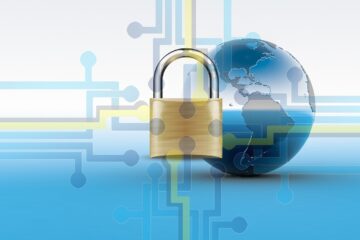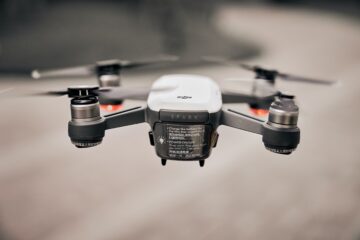IoT Device Management: Simplifying the Complexity of Connecting Devices
The Internet of Things (IoT) has revolutionized the way we interact with technology and the world around us. It has created a network of interconnected devices that communicate and share valuable data, enabling businesses and individuals to make informed decisions and streamline operations. However, the successful deployment and management of these devices require effective IoT device management strategies. In this article, we will explore the importance of IoT device management, the challenges it poses, and the key elements and benefits of efficient device management.
1. Introduction to IoT and its significance
The Internet of Things refers to the network of physical objects, vehicles, appliances, and other devices embedded with sensors, software, and connectivity, enabling them to connect and exchange data. IoT has evolved to encompass various sectors such as healthcare, manufacturing, transportation, agriculture, and smart homes. It has the potential to enhance efficiency, productivity, safety, and convenience in our everyday lives.
2. Understanding IoT device management
IoT device management involves the processes and technologies used to control, monitor, and maintain the vast network of connected devices. It aims to simplify the complexity of device connectivity, ensure their proper functioning, and maximize their longevity. Effective device management enables seamless integration, secure communication, and efficient data flow between devices and the cloud or central control systems.
3. Importance of effective IoT device management
Efficient IoT device management is crucial for the successful implementation and operation of IoT infrastructure. It provides organizations with the ability to remotely monitor, control, and update devices, ensuring optimal performance, security, and data integrity. Additionally, it helps in reducing downtime, minimizing maintenance costs, and improving overall operational efficiency.
4. Challenges in managing IoT devices
While IoT offers immense potential, managing a large number of connected devices can be challenging. Some of the key challenges include:
- Device connectivity and interoperability: Ensuring seamless connectivity between different devices from various manufacturers, using a wide range of communication protocols, can be complex.
- Security and privacy concerns: Protecting sensitive data and maintaining device security against cyber threats is critical but challenging in IoT ecosystems.
- Data management and analytics: Managing and analyzing the massive amounts of data generated by IoT devices require efficient storage, processing, and interpretation methods.
- Scalability and reliability: Scaling IoT deployments and maintaining consistent device reliability can be demanding and resource-intensive.
5. Key elements of IoT device management
To overcome the challenges mentioned earlier, efficient IoT device management incorporates several essential elements:
- Device registration and provisioning: Proper registration and provisioning of devices during the onboarding process ensure their seamless integration into the IoT network.
- Device monitoring and diagnostics: Real-time monitoring and diagnostics enable proactive detection of issues, maintenance, and troubleshooting of devices.
- Firmware updates and maintenance: Regular firmware updates and proactive maintenance ensure devices are up to date, secure, and performing optimally.
- Data collection and analysis: Effective data collection and analysis enable organizations to extract valuable insights, derive actionable intelligence, and make informed decisions.
- Security and access control: Implementing strong security measures and access control protocols safeguard devices, data, and the overall IoT ecosystem.
- Device retirement and decommissioning: Proper retirement and decommissioning processes ensure smooth transition and disposal of devices at the end of their lifecycle.
6. Benefits of efficient IoT device management
Implementing efficient IoT device management strategies offer organizations several benefits, including:
- Improved operational efficiency: Proactively monitoring and managing devices reduces downtime, enhances productivity, and streamlines operations.
- Enhanced security and privacy: Robust security measures, such as encryption and authentication, protect devices, data, and the privacy of users.
- Streamlined device maintenance and updates: Regular firmware updates and maintenance minimize device issues, prolong their lifespan, and ensure optimal performance.
- Better data management and analytics: Efficient data collection, management, and analysis enable organizations to extract meaningful insights and make data-driven decisions.
7. Best practices for IoT device management
To achieve optimal results in IoT device management, organizations should follow these best practices:
- Establishing clear device management policies: Clear policies ensure consistency, adherence to security standards, and effective governance of devices.
- Implementing robust security measures: Utilize encryption, secure protocols, and authentication mechanisms to safeguard devices and data from threats.
- Regular monitoring and proactive maintenance: Real-time monitoring, predictive maintenance, and rapid troubleshooting help identify and resolve device issues promptly.
- Utilizing data-driven insights for optimization: Leverage data analytics to anticipate device performance, optimize processes, and improve overall efficiency.
- Ensuring compliance with regulations: Comply with relevant industry-specific regulations and data protection laws governing the use of IoT devices.
- Collaborating with vendors and partners: Establish partnerships with trusted vendors, manufacturers, and service providers for seamless support, updates, and interoperability.
8. Future trends in IoT device management
As IoT evolves, several trends are shaping the future of device management:
- Edge computing and distributed intelligence: Moving processing power closer to devices reduces latency, enhances data privacy, and improves network efficiency.
- Artificial intelligence and machine learning: AI and ML enable predictive maintenance, real-time analytics, and autonomous decision-making within the IoT ecosystem.
- Blockchain technology for enhanced security: The decentralized nature of blockchain provides an added layer of security and trust for IoT devices and data.
- Standardization and interoperability: Developing industry-wide standards promotes device compatibility, simplifies integration, and ensures seamless communication.
9. Conclusion
Efficient IoT device management simplifies the complex web of connected devices, improving performance, security, and data management. By adhering to best practices and leveraging advancements in technology, organizations can overcome challenges and reap the benefits offered by IoT. Effective device management promotes operational efficiency, streamlines maintenance processes, and enables informed decision-making through data-driven insights.
10. FAQs
Q1. How does IoT device management improve operational efficiency?
A1. IoT device management allows organizations to monitor devices in real-time, detect issues proactively, and streamline maintenance processes, leading to reduced downtime and enhanced productivity.
Q2. Are there any privacy concerns associated with IoT device management?
A2. Yes, privacy concerns arise due to the vast amount of data collected by IoT devices. Implementing robust security measures, such as encryption and access control, addresses these concerns.
Q3. How does IoT device management help in ensuring data security?
A3. IoT device management incorporates security measures like authentication, secure communication protocols, and encryption, protecting devices and the data they generate from unauthorized access and cyber threats.
Q4. What are the benefits of data-driven insights in IoT device management?
A4. Data-driven insights obtained through IoT device management enable organizations to optimize processes, make informed decisions, and enhance overall efficiency.
Q5. What trends can we expect in the future of IoT device management?
A5. Future trends in IoT device management include edge computing, artificial intelligence and machine learning integration, blockchain for enhanced security, and the development of standardized protocols for increased interoperability.
In summary, IoT device management serves as a crucial aspect of successful IoT deployments. By effectively managing devices through proper registration, monitoring, maintenance, and security measures, organizations can maximize the potential benefits of IoT while minimizing challenges and risks.


0 Comments